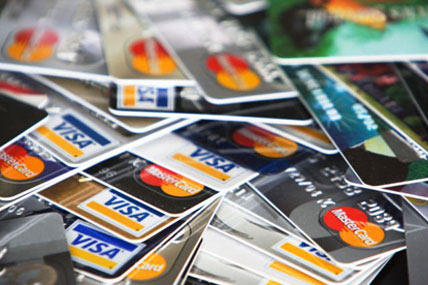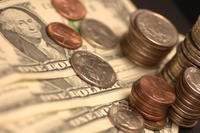As we move into 2013, U.S. consumers are carrying balances exceeding $850 billion on approximately 600 million credit card accounts. This is down from the peak of more than $950 billion during 2009-2010, but credit card debt is still the third largest component of household indebtedness, behind only mortgages and student loan debt.
Americans’ love affair with plastic continues as many have come to rely on their credit cards to weather extended periods of unemployment in a stagnant economy.
When the latest batch of monthly statements starts showing up in your mailbox this month, you may find yourself wondering whether your debt load is starting to get out of control. I started helping consumers with their debt more than 15 years ago, and in that time, I’ve learned to recognize the warning signs of impending financial disaster.
These are tried and true indicators that you’ve fallen into the credit card debt trap, a spring-loaded steel monster designed to snap shut and hold you firmly in its grasp. This is not just about the combined total balance you’ve been carrying from month to month. For one person, a debt load of $30,000 may be no problem, while for someone else it may represent total disaster. Rather, it’s about how much debt you’re carrying relative to your income, and whether the situation is sustainable over the long haul.
Let’s take a close look at the seven warning signs your debt is getting out of control. You don’t need to have all seven indicators to be at serious risk of a credit card meltdown. Even if only a few of these factors describe your situation, you should still take a hard look at your finances and consider the basic options for debt relief.
1. Credit Limits Maxed Out or Lowered.
When Congress passed the Credit CARD Act in 2010, it eliminated the universal default feature where a bank could increase your interest rate even while you were paying them on-time, simply based on a default with an unrelated creditor. This was a big relief for consumers, and it stopped the banks from pushing people off the financial cliff when they were already hanging on for dear life. However, creditors still have an alternate method of accomplishing the same push. They can lower your available credit, even when you have paid them on time per your agreement.
The hidden problem with carrying credit card debt balances is that as the balances climb, you will eventually exceed the optimum credit utilization ratio, and this in turn will lower your overall credit score. Once that happens, your creditors may react by trimming open available credit. This further increases your credit utilization ratio, thus lowering your score even further, and creating a vicious downward spiral.
Once you reach the point where you have no available credit and have maxed out the cards, you’re trapped. Instead of being able to use your credit to manage monthly cashflow and hold the line, you suddenly find that you’re carrying a giant set of balances and you have nowhere else to turn for additional credit.
2. Interest Rates Bumping 20% Even Without Default.
The mathematics of credit card debt is relentless. At a time when interest rates are at a historic low, credit card institutions continue to charge interest rates that are very high by comparison. While many cards carry annual percentage rates (APRs) around 12%, it’s common to see non-default APRs up to 20% for purchases and 25% for cash advances.
Banks are required now to provide 60 days’ notice of any interest rate increase, but if you receive such a notice when you are maxed out, what can you do about it? Not much, except to keep making payments at the higher APR.
If you revolve balances totaling $30,000 at an APR of 20%, with monthly payments at $750, it will take 67 months to fully pay off the debt. Given the financial challenges that led to $30,000 of debt in the first place, how likely is it you will be able to pay $750 month after month without fail, for more than five years? One little bump in the road, and you’re on the slippery slope.
What most people end up doing is paying only the required minimums, in order to free up as much extra cash in their monthly budget as possible. Using the $30,000 scenario again, if you were to just keep paying only the minimum as the balance declined, it would take you an astonishing 44.5 years to pay off the debt.
3. Default Is Always Just Around the Corner.
Another clear warning sign that your credit card debt is about to go nuclear is that you are constantly skating on the edge of defaulted payments. It’s a struggle every month to cover the required minimums, but you are managing to just hold the line and so far have not missed any payments. All it takes in this situation is an upward tick in interest rates (still legal with 60 days’ notice) to push you over the edge.
Many of the banks now structure the minimum payment formula so that you are required to pay 1% of the balance each month, plus that month’s interest charges. So, for example, if you have a card with a $10,000 balance at 12% interest, using this formula your monthly payment would be $200, with $100 going toward principle and the remaining $100 toward interest. But if that rate jumps to 18%, watch what happens. The new minimum payment is $250 per month, with $100 toward principle and $150 to interest. This is a 25% increase in the required monthly payment.
Multiply this across several accounts and you can easily see how your payments could quickly climb out of reach. All of this can happen without a single defaulted payment taking place, but the new increased minimums are sometimes enough to cause people to default. Then of course, the trap gets worse as the default rates of 29% or more kick in, not to mention $39 late fees.
4. Default Rates Have Already Been Triggered.
Let’s say you have been faithfully making your minimum payments month after month. You are so stretched you have no emergency reserves, so when you’re suddenly faced with a major unplanned expense (car repairs, medical bills, etc.) you are forced to skip a couple of payments on your largest balance of $10,000. Goodbye 12% APR, and hello 29%! Then you start the “credit card shuffle,” where you skip other payments to catch up on the first ones you missed. Before long, all the accounts are affected, and you’re facing 29% interest rates across the board.
Let’s see what happens when APRs explode from “only” 20% to 29%. Instead of taking 67 months to pay off the $30,000 total, it will now require 143 months (almost 12 years). You will pay $76,838 in interest over that period, instead of “only” $19,851 of interest, a difference of more than six years longer and $56,987 of additional interest. That was a very expensive car repair.
Once the default interest rates have been triggered, you’ve fallen off your own private version of “the fiscal cliff.”
5. Credit Card Payments Exceed 15% of Gross Income.
Whether or not your credit card debt load represents a financial burden depends on your income. A good working rule of thumb is that credit card debt payments should never exceed 15% of your gross monthly income before taxes, and ideally should be well under 10% of gross income. Obviously, everyone’s situation is different, so one person might be able to service a lot more debt if they own a home that has been fully paid off. But as a general rule, most people still have mortgage or rent payments, car payments, and of course all the usual household bills. If you can keep credit card debt payments at or below 10% of your gross income, then most people would find that situation manageable, emergencies aside. But once the figure starts climbing up over 15%, trouble is brewing.
For example, say you’re carrying $50,000 of debt, with $1,250/month minimum payments. Your income is $5,000/month gross, so you are paying 25% of your gross income toward credit card payments, mostly for the privilege of staying $50,000 in debt! That leaves you $3,750 per month for taxes, mortgage or rent, car payment, utilities, telephone, food, insurance and other household expenses. For most consumers, this would not be a sustainable situation, at least not for the long period of time required to pay off $50,000 of debt via monthly payments.
6. You Are Not Funding Retirement Accounts.
When credit card debt payments start to gobble up more and more of your disposable income, usually one of the first things people do is stop contributing to their company or personal retirement plan. If you’re doling out 15-20% of your gross income toward the servicing of credit card balances, then it’s almost impossible to continue funding a 401(k) or IRA account. The long-term financial impact of this decision is enormous.
Let’s look at the potential long-term impact. Still using our example of $30,000 debt at payments of $750 per month and APR of 20%, we saw that it would take more than five years to pay off the debt. What if that same $750 per month were invested in a retirement account yielding annual returns of 8% (below the historic returns of the stock market over many decades)? Assuming an age of 40, someone who funds $750 per month for five years, and then left the investment alone until retirement at age 65 would have more than $273,000 of additional nest-egg funds. Perhaps you don’t feel that the “cost to play” of $19,851 interest doesn’t seem so bad. How about the loss of more than a quarter million of retirement money? The long-term cost of carrying “only” $30,000 of debt is simply staggering when you analyze the true impact.
7. You Are Constantly Feeling Stressed or Anxious About Your Debt.
The other warning signs discussed above all tie back to the unforgiving math of debt, interest rates and monthly payments. But there is an emotional factor that must be included here as well. Managing high levels of debt is stressful, to be sure, but it affects some people worse than others. Only you can decide when you have hit the wall emotionally. But if you’re losing sleep at night worrying about how to cover all your bills, or you are experiencing bouts of anxiety or panic, then your physical health is involved and you need to take action.
Medical research shows that continued stress has a deleterious effect. High blood pressure, increased risk of stroke or heart attack, reduced ability to fight infections, and other serious health conditions can all be caused or made worse by ongoing stressors in our lives. Your excessive credit card debt may not only cost you a comfortable retirement in terms of financial resources. It may also actually shorten your life span.
If you are seeing some of these warning signs in your own life, then it’s time to get serious about your debt situation. The longer you wait, the harder it will be to solve the problem. Start by researching the available options for eliminating debt. These options include debt roll-up, credit counseling programs, bankruptcy, and debt settlement. Consult with a local bankruptcy attorney to learn whether you would be able to file under Chapter 7 and fully discharge the debts. Talk with a reputable non-profit credit counseling agency. Debt settlement is another viable option for people who would otherwise have to file bankruptcy under Chapter 13 (where a portion of the debts is repaid during a 3- to 5-year period). Leave your emotions at the door, do your homework, and let the numbers lead you to the correct solution for your situation. Whatever strategy you ultimately choose, the important thing is to recognize you have a problem and to take action.
-- Charles Phelan is a former executive in the debt settlement industry and a debt coach who helps people get out of debt without bankruptcy. He teaches do-it-yourself debt negotiation at ZipDebt.com, and is the author of "How to Eliminate Your Debts Quickly and Safely Without Filing Bankruptcy".












